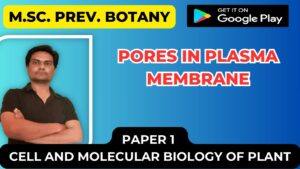![]()
Gymnosperm Introduction
- The word ‘gymnosperm’ was used in 300 B.C., by Theophrastus, a pupil of Aristotle, in his book “Enquiry into Plants”.
- Theophrastus used this term to embrace all those plants whose seeds are unprotected (Gymnos=naked; sperma=seeds).
- The seed plants (Spermatophyta) are grouped into two major groups on the basis of protection afforded to the ovule before and after fertilization.
- These groups are the gymnosperms and the angiosperms.
- The gymnosperms have their ovules freely exposed before and after fertilization. They are not enclosed by any ovary wall.

GENERAL CHARACTER:
Vegetative Character:
Habit and habitat:
- The gymnosperms are the most ancient seed plants that originated during the late Paleozoic (ca 265 million year ago) era, but flourished well during the Mesozoic.
- The living gymnosperms include middle-sized or tall trees and shrubs and number approximately 70 genera and 725 species. .
- Plant body sporophytic which is differentiated into root, stem, and leaf.
Root:
- The roots are generally taproot, but mycorrhizae and coralloid roots are known in some genera. In root xylem is exarch and diarch to polyarch.
Stem:
- The stem is aerial, erect, unbranched or branched.
- In some genera branches may be of two types;
- (i) the long shoot
- (ii) the dwarf shoot.
- Collateral, conjoint, endarch and open vascular bundle present in young stem.
- In xylem vessels and in phloem companion cells are absent.
Leaf:
- The leaves may be simple or compound and vary in size from a minute scale leaf to a large and more than six feet long.
- They show great variation in shape also.
- The venation may be reticulate, parallel or even dichotomous.
- Leaves are of two types:
- (i) Microphyllus leaf – These are small and scaly,
- (ii) Megaphyllus – these are large and well developed.
- The arrangement of leaves may be opposite and decussate [Gnetum, Ephedra], whorled[Cycas] or spirally arranged (Podocarpus, Taxus etc.).
Wood:
- The secondary wood in the gymnosperms may be:
(i) Manoxylic:
- This is porous, soft ,more parenchymatous in nature and found in cycadophyta It has wide medullary rays and is useless commercially.
(ii) Pycnoxylic:
- This wood is compact and has narrow medullary rays and characteristic of coniferophyta.
- It is of great commercially value.
Reproductive Character:
- The gymnosperms are heterosporous i.e., Microspore and Megaspore.
- But the two kind of spore produce two kind of gametophyte, i.e., the microspore or the pollen grains produce male gametophyte
- whereas the single megaspore enclosed within the megasporangium develops into the female gametophyte bears two or more archegonia.
- The two types of cone or strobili may be borne on the same tree [pinus] or on different trees [Ginkgo, Cycas].
- The microspores and megaspores are haploid due to result of meiosis in the respective spore mother cell they are pioneers of male and female gametophyte.
- The strobili or the cones are of varying sizes and shapes.
- Their position on the plant also varies.
- Male cones are ephemeral.
- Microsporangia present at the abaxial surface of sporophyll.
- Number of sporangia in a sporophyll may be fixed or not fixed.
- Microspore is the first cell of the male gametophyte.
- Megasporangium are naked on sporophyll.
- Ovule is orthotropous and unitegmic generally.
- In female gametophytes the number of archegonia varies according to species.
- Archegonia consists of egg and one venter canal cell.
- Pollination takes place by wind.
- Pollen grains are collected at ovule in specific structure known as pollen chamber.
- Zygote is the mother cell of the next sporophytic generation.
- Embryo development is of meroblastic type i.e.embryo develops from the basal part of zygote.
- Endosperm development starts before fertilization so it is a haploid structure.
- Embryo development by free nuclear division at the initial stage.
- Polyembryony is common in gymnosperm
- The alternation of generations is heterologous in all the gymnosperms.













